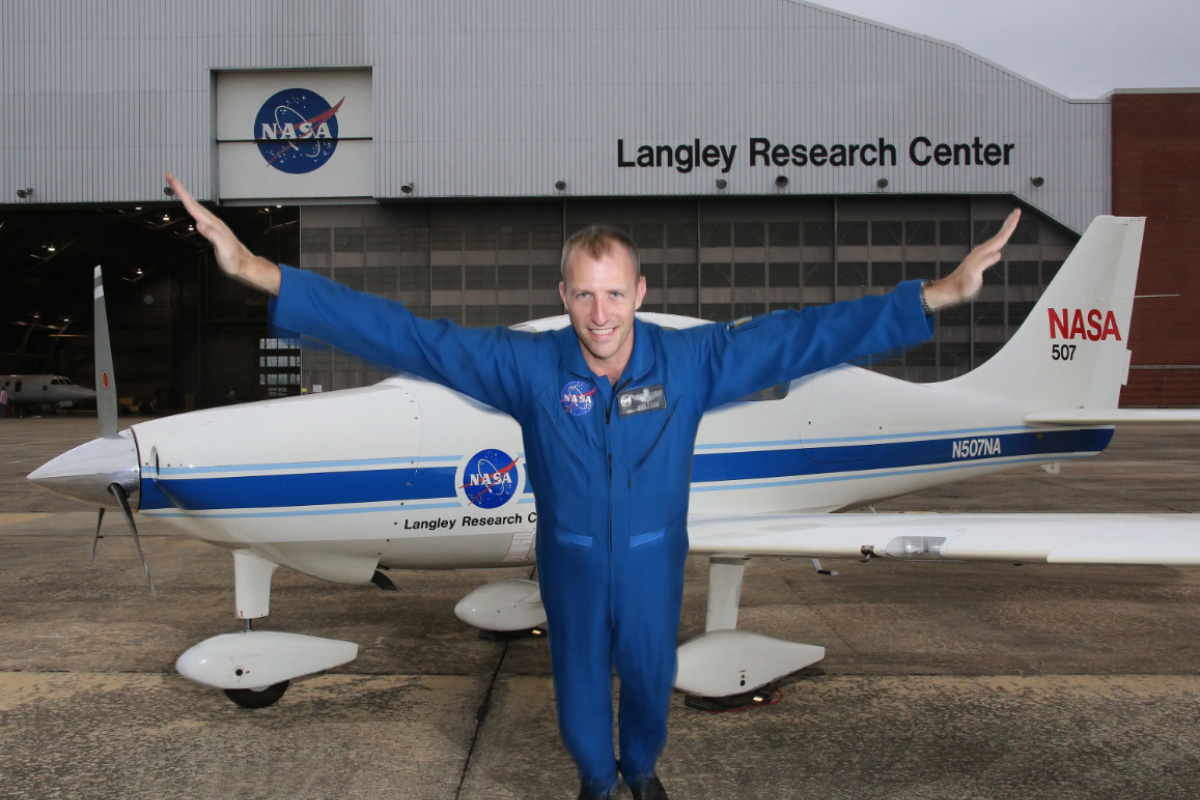Summary "Spread Your Wings" on social media with #NationalAviationDay Take an introductory flight lesson or build an airplane NASA is innovating aviation technology for a better future Today, the United States is celebrating National Aviation Day , a holiday first established in 1939. It was established by a presidential proclamation by President Franklin D. Roosevelt to designate the anniversary of Orville Wright's birth (born in 1871) to be a national holiday (Orville was still alive when the proclamation was first issued).
It has now been over 120 years since Orville Wright first flew . NASA is sharing 11 ideas for how aviation enthusiasts can celebrate it today. NASA's ten + bonus ideas for celebrating National Aviation Day NASA's first suggestion is an easy one that almost anyone can do (if they can find an aircraft).

All they need to do is "spread their wings" by posing in front of an airplane with their arms stretched out like the wings of an airplane. They should then upload the picture onto social media with the hashtag #NationalAviationDay. NASA's ideas for remembering National Aviation Day "Spread Your Wings" Remember that NASA is with you when you fly Visit your local science museum or NASA visitor center Watch an aviation-themed movie Take an introductory flight lesson Build an airplane Tell us about your first flight Follow what we're doing to transform aviation Visit your local library or download a NASA e-book Have plane spotting picnic near an airport Get to know the faces of flight Budding pilots who would like to make their dream of flying come true can consider taking an introductory flight lesson.
Check out the local Civil Air Patrol - a volunteer organization associated with the Air Force that helps introduce young people to flying. Alternatively, take the time to build an airplane (there are homebuilt airplane kits available for those who can afford them). The agency has awarded two contracts to develop roadmaps and design concepts for a vehicle that can travel at speeds of Mach 2 to 4.
NASA has a big hand in developing aviation NASA has always been at the forefront of aviation development. People are also urged to remember that NASA-developed technology is in every US aircraft and air traffic control tower (even aircraft winglets were developed by NASA to reduce drag). One contemporary example of NASA innovation is the X-66, a sustainable flight demonstrator .
One of the most notable historic NASA projects was the X-15 hypersonic rocket plane , which was flown in the 1960s and whose hypersonic speed has still not been exceeded. "NASA’s aeronautical innovators are working to transform air transportation to meet the future needs of the global aviation community..
. Improving an airplane’s aerodynamics, reducing the amount of fuel used by airplanes, making airplanes of all sizes quieter, decreasing the amount of harmful emissions released into the atmosphere, working with the Federal Aviation Administration to improve the efficiency of air traffic control – the list could go on for many thousands of more words." - NASA NASA also suggests that people can learn more about aviation by visiting a museum or NASA visitor center.
NASA has visitor centers in Norfolk, Virginia; Cleveland, Ohio; and San Francisco, California (Langley Research Center, Glenn Research Center, and Ames Research Center )..



















